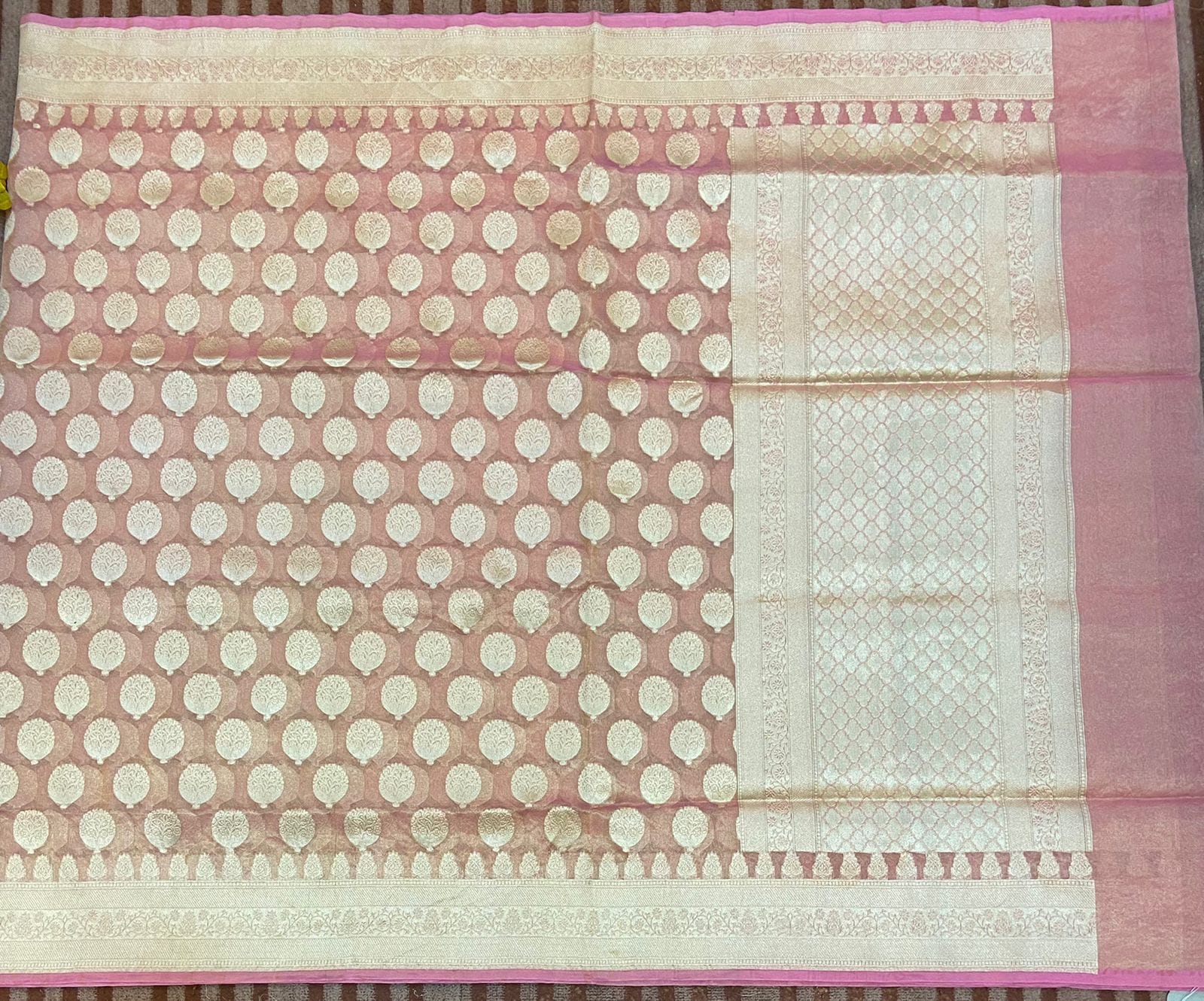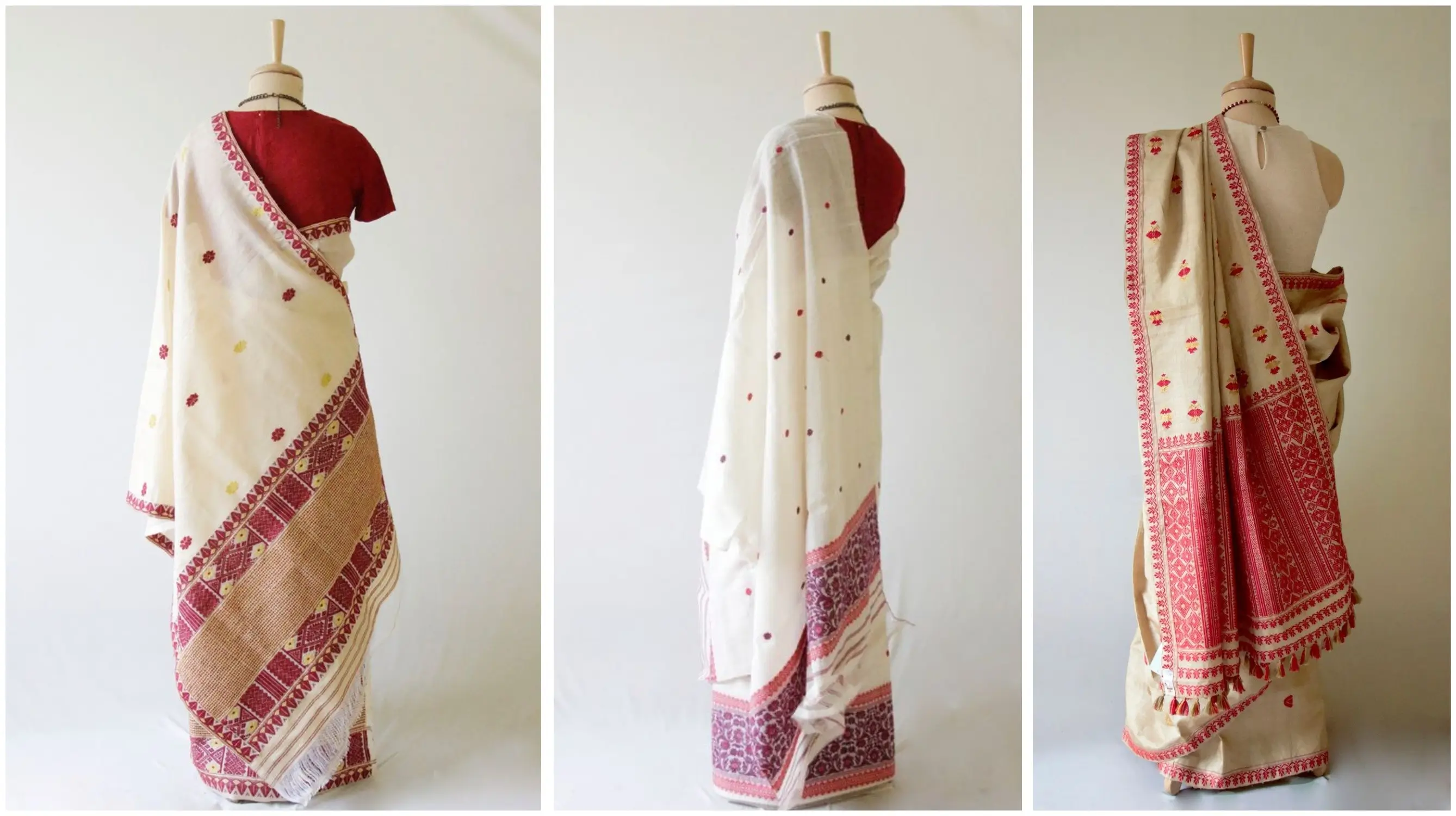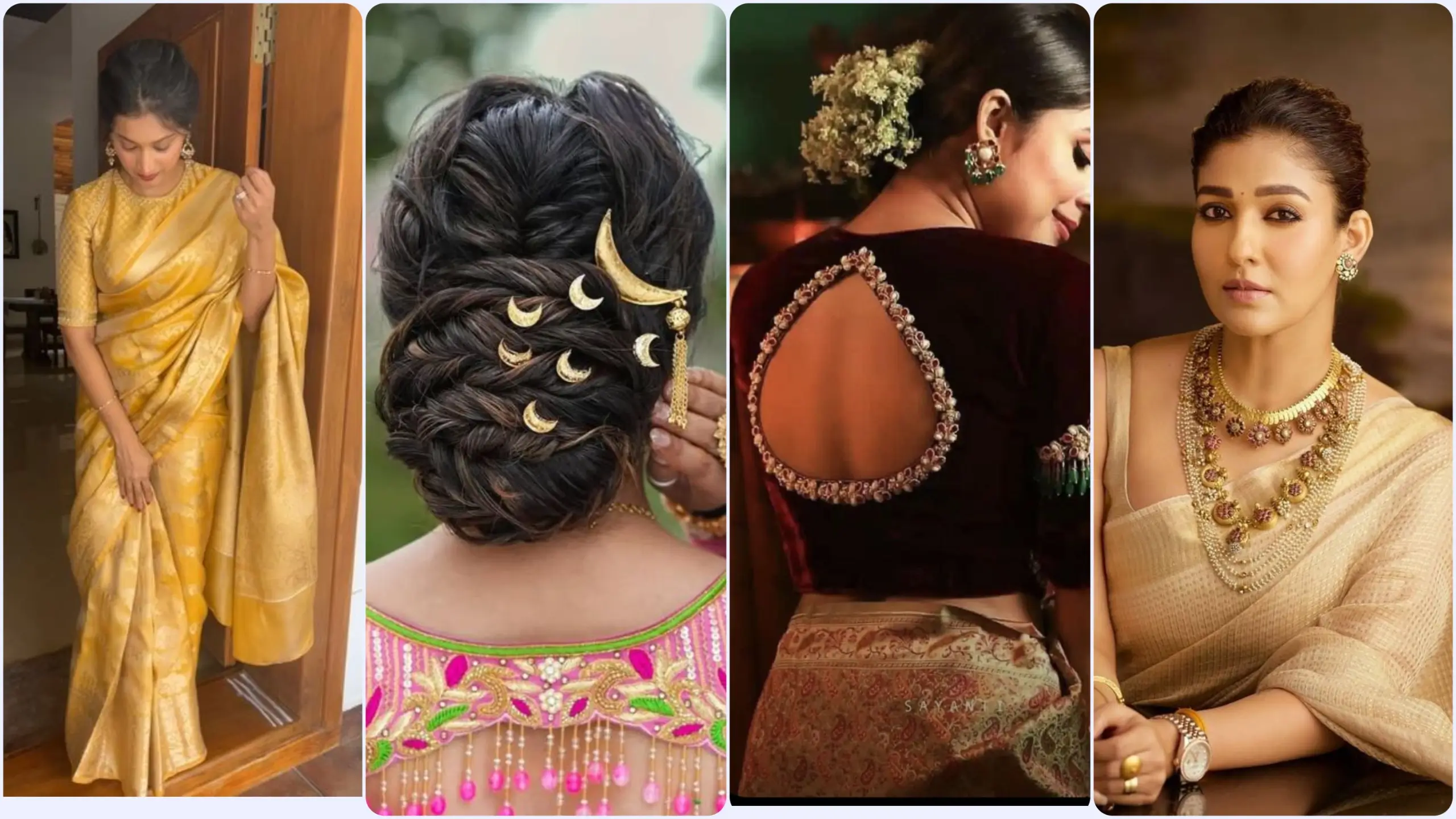Woolen Pashmina, a unique and cherished fabric made by the Kashmiri weavers of the 15th century, is greatly sought after all over the world for its regal appearance and mystical charm.
The craft of making pashmina is regarded as one of the finest in the world and is highly valued for its intricate techniques and premium quality. When combined with rich Banarasi weaves, the outfit's richness is undefinable.
With over two centuries of popularity in bridal and bridesmaid attire, the Pashmina Banarasi combo continues to be a crucial component of a fashionable look. This popularity attests to the endurance and universal appeal of this traditional item.
[Know Why Should One Shop Red Banarasi Silk Saree For Wedding?]
What is Pashmina?
In Kashmir, the unprocessed, raw fibres of domestic Changthangi goats were referred to as "wool" by the Persian word pashm. The fabric and the Kashmir shawl variant made from it are both referred to as "pashmina" in modern usage.
Accessories made of pashmina are renowned for their warmth and fineness. They come in various sizes, including scarves, wraps, and stoles. Full-sized shawls are also made from raw, de-haired Cashmere Pashmina wool.
Since the fibre cannot tolerate excessive tension, pure pashmina has a fairly gauzy, open weave. A combination of 70% pashmina and 30% silk is the most often used pashmina fabric, although 50/50 is also prevalent. The 70/30 is beautifully draped, neatly woven, and has a lovely shine while being soft and lightweight.
This handwoven treasure thrived under the patronage of the royals and nobles in the past. Its origins can be attributed to the Mughal era, but through time, French aesthetics and design elements became a part of it.
[Read about the History Of Banarasi Saree]
The making of the Pashmina Banarasi saree
The quality Pashmina wool and the sophisticated weaving methods used in Banaras are combined to create the stunning Pashmina Banarasi saree. A Pashmina Banarasi saree must be handcrafted, which is a labour-intensive procedure that calls for trained artisans.
The exotic wool undergoes a time-consuming spinning process before being treated with a blend of rice water to give it the highest level of softness. Its distinctive earthy colour schemes are made possible by organic dyes made from saffron, indigo, lac, sunflower, and other plants. The yarn is then hand-spun and embellished with traditional Tilla Dozi and Sozni embroidery in a series of subsequent steps.
Simple steps to make a Pashmina Banarasi saree are as follows:
Selecting the Pashmina Wool: Choosing the finest Pashmina wool is the first step in creating a Pashmina Banarasi saree. The Pashmina goats that live in the Himalayan region are the source of the wool. Since the wool is warm, smooth, and silky, it is perfect for winter wear.
Spinning the yarn: The Pashmina wool is then spun into fine threads using conventional spinning techniques. To acquire the required hue, the yarns are subsequently coloured using natural dyes.
Preparation of the loom: The loom must be set up for weaving in the following step. To make the saree's foundation, the warp and weft threads are arranged on the loom.
Weaving the saree: The complicated Banarasi weaving method is used to create the saree. This entails sophisticated interlocking weaving patterns utilising Pashmina yarns to produce a rich texture and design.
Adornments: When the saree is woven, zari, or gold and silver threads, sequins, and beads are used to decorate it. The decorations are included to draw attention to the saree's exquisite patterns and designs.
The last touches: Adding the finishing touches is the last stage in creating a Pashmina Banarasi saree. Trimming the edges, adding the pallu or border, and adding any remaining embellishments are all part of this process.
The finished product is a stunning piece of apparel that not only exudes elegance but also alludes to the intricate weaving traditions of India.
[Read About Banarasi Silk Sarees: A Lesson in Handloom Manufacturing]
Pashmina Banarasi sarees: Maintenance Tips

In order to preserve its beauty and quality, a Pashmina Banarasi saree needs to be treated with careful care. The following are some suggestions for caring for a Pashmina Banarasi saree:
-
Pashmina Banarasi sarees are made of delicate textiles that are readily harmed by water and abrasive detergents, thus they should only be dry cleaned. Take your saree to a professional dry cleaner rather than washing it at home.
-
Your saree should be kept in a cool, dry area when not in use. The fabric may become damaged and discoloured if you store it in the sun or in a moist environment.
-
Natural fibres like those in pashmina and Banarasi sarees are easily harmed by chemicals. Do not spritz deodorant or perfume straight on the saree.
-
Be delicate when handling the saree whilst wearing it. The fabric should not be pulled or tugged upon as this could result in tearing or stretching.
-
When ironing the saree, use a low heat setting. To protect the delicate zari and embroidery work, always iron the saree from the back.
Pashmina Banarasi weave needs a lot of care and attention to maintain its quality craftsmanship, as it is highly delicate and expensive. The correct procedures must be followed, starting with washing, folding, and storage to preserve its fineness.
You may prolong the beauty and quality of your Pashmina Banarasi saree by adhering to these straightforward instructions.
Final Thoughts
Albeli Fashions is a handloom banarasi saree shop in Varanasi renowned for its pure, gorgeous, and superior quality banarasi saree manufacturing for weddings, festivities, celebrations, etc. We have stunning varieties of finely designed handloom Pashmina banarasi sarees that reflect India's rich and artistic culture. Start shopping with us today and experience the beauty and elegance of our Banarasi saree collection!



.webp)


Comments
Leave A Comment: